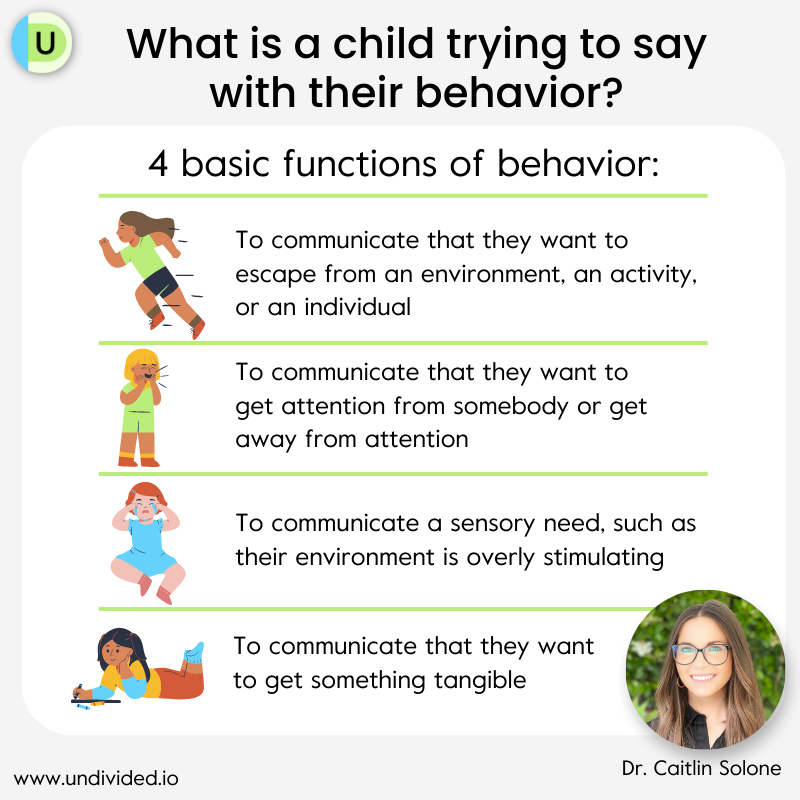Positive Behavior Supports and Inclusion in the Classroom: Undivided Live with Dr. Caitlin Solone
Many of us are familiar with school-wide positive behavioral programs that focus on values such as respect, kindness, and hard work and reward students when their behavior reflects those values. But how do these programs include children with disabilities, particularly those with extensive behavior and/or support needs in general education environments? When can school-wide interventions be modified?
During our live event, Dr. Caitlin Solone talked about how positive behavior supports can and should look in every classroom.
Check out the clips below for highlights or see the full recording and transcript here!
As Dr. Solone explains, behavior is all about communication. Students are communicating whether their needs are being met. Positive behavioral intervention and support (PBIS) programs can lay down school rules about what types of communication are appropriate. Listen to her explanation in this clip about how we can better understand our kids' behavior and how their environment plays a role in supporting them.
Join for free
Save your favorite resources and access a custom Roadmap.
Get StartedAuthor



